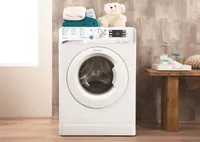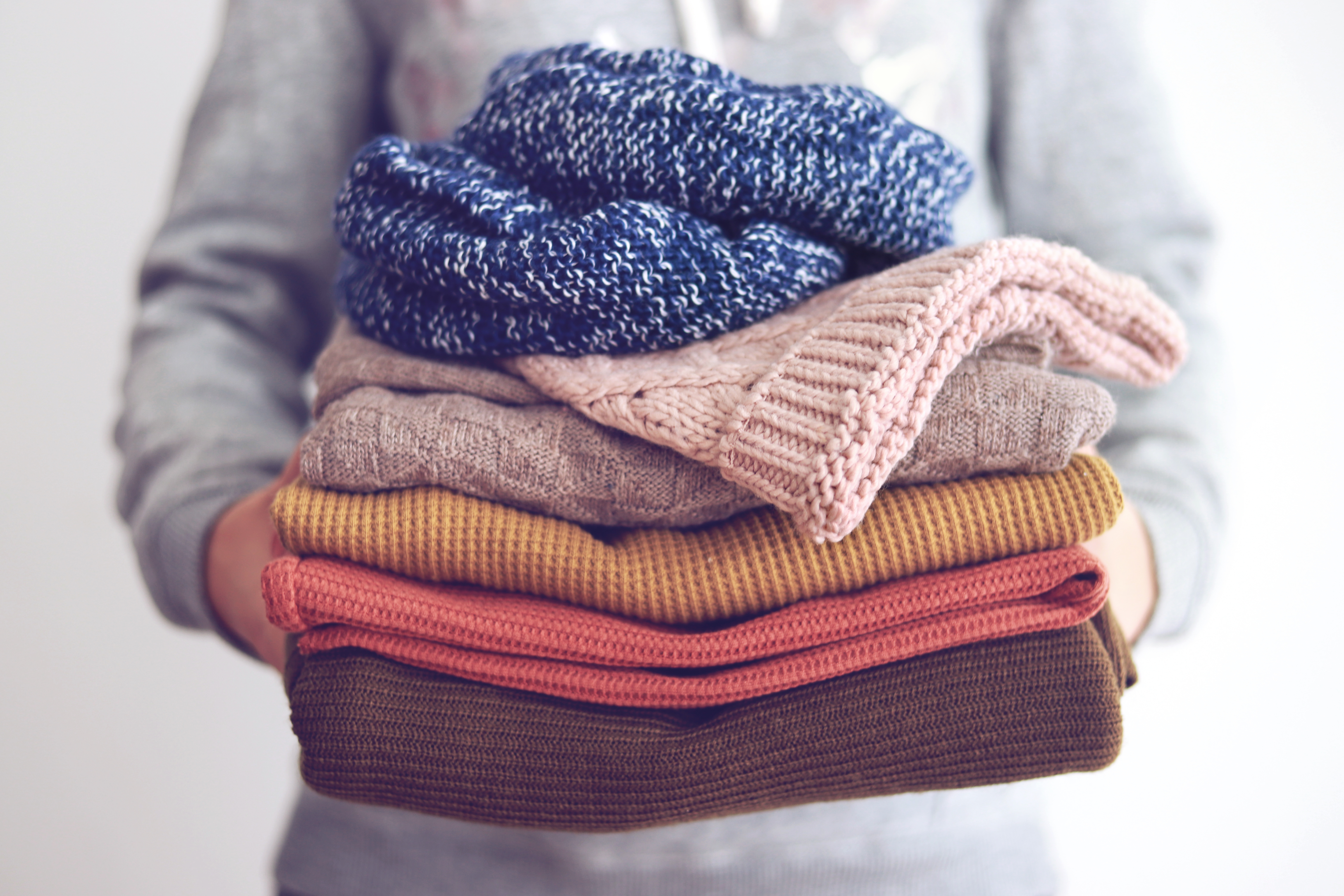

Everybody's got to know how to do laundry properly, so if you've got some questions, we've covered all you need to know about it right here.
It's one of those perpetually never-ending chores. Somehow, no matter how often you seem to do your laundry, those dirty clothes and linens just keep stacking up. Figuring out how to wash clothes is a bit of a minefield in itself, whether it's figuring out how to remove stains or how to wash clothes by hand.
You'd think how to wash your clothes is easy, right? Just separate your lights and darks, pop in some laundry detergent, or the best washing pods, and you're good to go. Well, it can be a bit more complicated than that. Washing delicates? It's a whole other process. Trying to wash your trainers or bedding? Different again. And how do you choose the best laundry detergent? You know the drill.
Housekeeping guru Martha Stewart explains, 'Of the many household tasks we do each day, doing the laundry seems like it should be a no-brainer: put clothes in the washer, add detergent, and press start. While the process may seem simple, regular washing can take a toll on your garments, so it's important to understand the necessary steps to achieving a perfect load of laundry.'
Plus, it's not a task you want to rush and take lightly. (Moment of silence for all the wool sweaters we've shrunk to infant sizes.)
Thankfully, there are some simple steps you can take to keep your clothes in tip-top shape and streamline your washing routine. Read on for everything you've ever wanted to know about doing laundry, busting stains, and keeping your clothes in top shape.
- Doing laundry starts with having the best washing machine. Read our buying guide to find the right one for you.
How to wash clothes in the washing machine
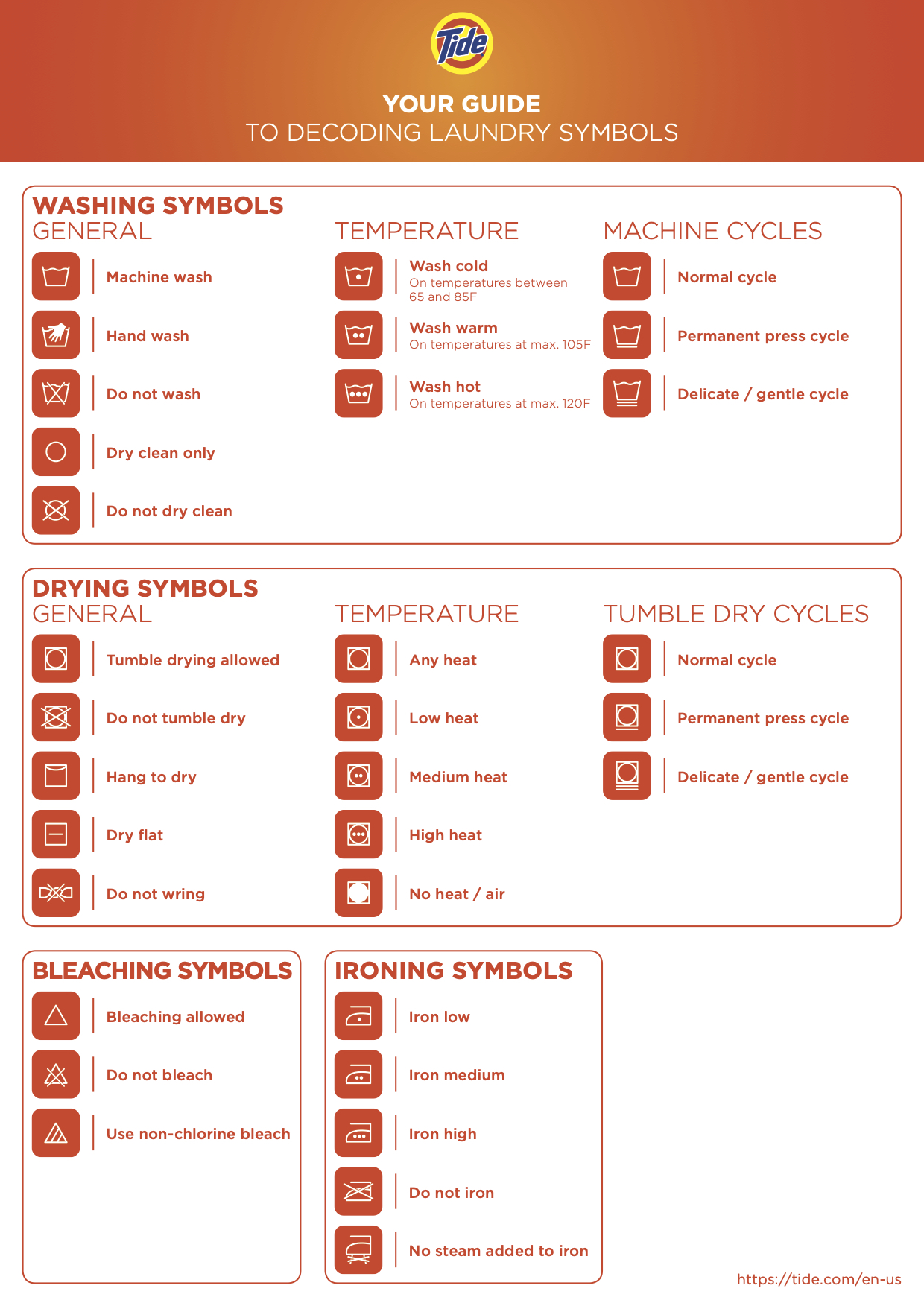
Washing symbols
Since much of our clothing is now imported, reading the directions on the label is not always so simple. Sometimes, you may encounter an array of symbols. In general, if you see a symbol with a large X through it, it's telling you not to do something that will damage your clothing.
Get small space home decor ideas, celeb inspiration, DIY tips and more, straight to your inbox!
Brush up on your symbols before washing. Tide has a pretty thorough reference guide you can keep on hand.
- Check out what all the washing symbols mean in our guide.
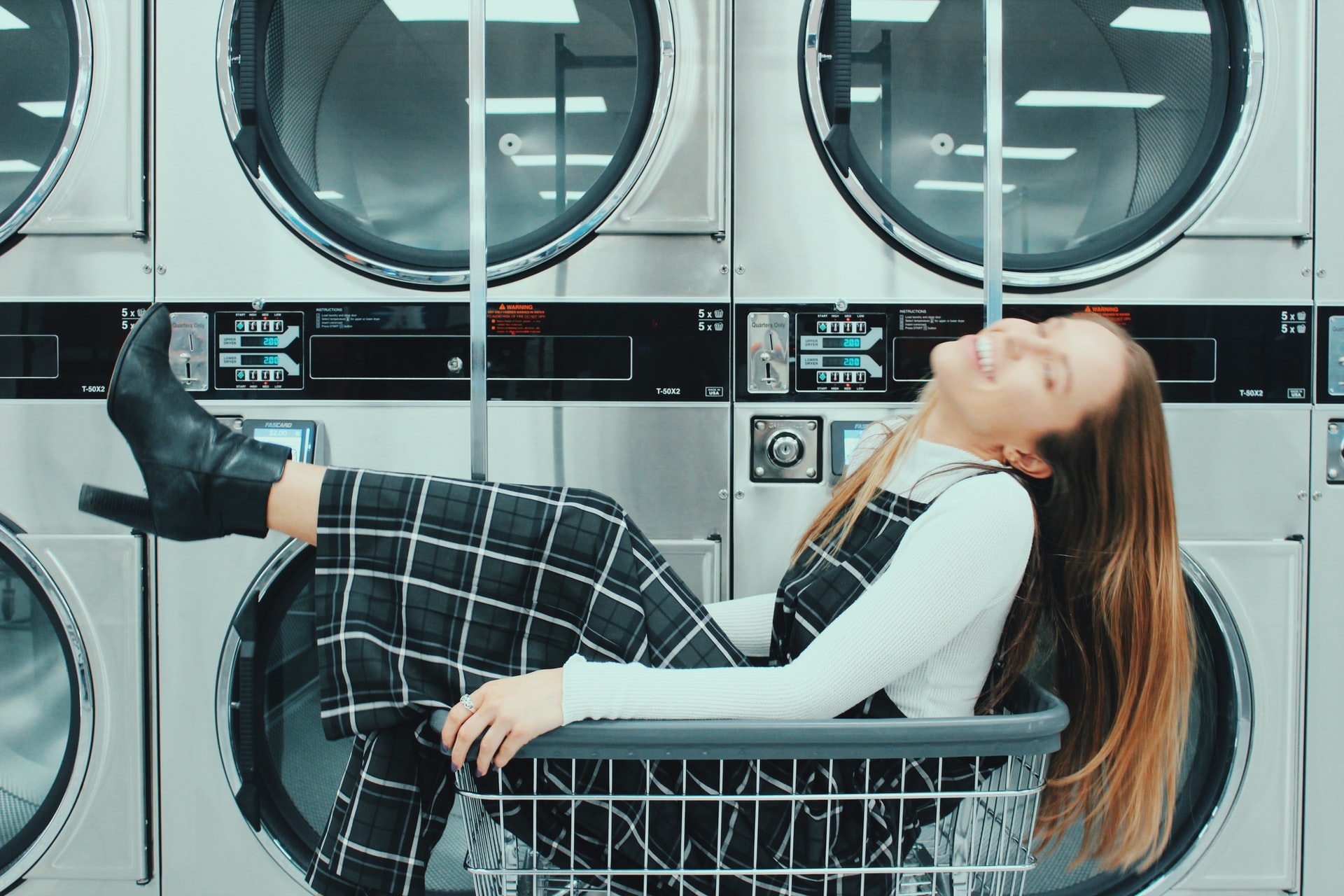
How to separate laundry
While it can be very tempting to just throw the whole laundry pile into the washing machine, it's important to do some sorting. First, you'll want to separate lights from darks. It's true, there is an age-old debate over whether it really matters, but there are a few good arguments for taking the extra step.
Dye in darker colored clothing, especially when pieces are new, can seep into your lighter pieces. For example, a new red T-shirt can turn all of your light-colored undershirts pink. It can have the same effect on light gray and beige clothing, and they'll be ruined for good. Another benefit to washing whites on their own is that you can add in some white vinegar or bleach to keep them looking bright and new.
If you're in a pinch for time or only need to wash a few items together, chances are you'll be okay. Just be sure to wash clothes in cold water so you won't encourage color bleeding. Also, be sure not to throw in a new pair of jeans or dark-colored piece of clothing or your whites may be changed forever.
Martha Stewart recommends, 'Once a month, or when your whites become dull, wash them with a color remover or soak items in boiling water and oxygen bleach in a basin (this is suitable only for fabrics that won't shrink). You may have to experiment to determine which technique whitens best.'
But wait, there's more! You'll also want to separate types of fabrics to avoid damaging your more delicate items. Separate items into these groups:
- Durable everyday laundry: Most of your everyday wear can go in one group. Think cotton, linen, and durable synthetics. This will include pieces like T-shirts, button-downs, socks, and khakis.
- Denim: Jeans and other denim items
- Linens: Towels and sheets
- Delicates: Make sure your lingerie, silk camisoles, and embellished sweaters go in their own pile.
- Athleisure and performance fabrics: Gym clothes like active leggings, sports bras, and swimwear should be washed separately.
- Woolens and other knits that will be prone to shrinkage.
- Anything "dry clean only"
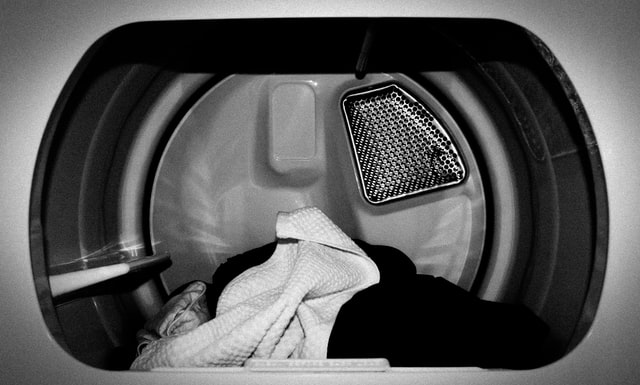
How to wash a washing machine
Since you're taking care to properly clean your clothes, don't forget to properly clean your washing machine. And no, it doesn't just clean itself when you're washing your clothes.
First you'll want to spray the gasket with white vinegar and wipe with a damp cloth. Then, set your washer to its highest water level and hottest temperature settings (or if yours has one, the tub clean setting). Add two cups of white cleaning vinegar and run it through a full cycle. Then, run another cycle (again with hottest water and highest level) with a half-cup of baking soda. Finally, wipe the drum and seal with a damp microfiber cloth.
For maintenance, keep the washing machine open a crack so it has a chance to dry out, and wipe out the seal once a week.
- If there already is build-up in your machine, find out how to clean your washing machine in 6 easy steps.
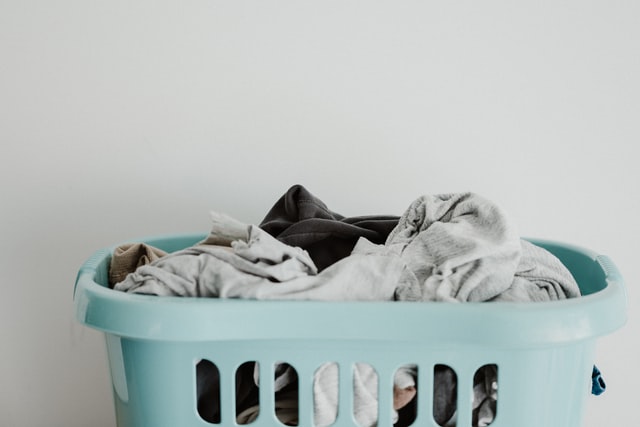
How to hand-wash clothes
When your woolen sweaters, intimates, and delicate items say "handwash only," heed that advice.
Some more sturdy delicates can be washed in a mesh bag on your washing machine's delicate cycle, but when in doubt, by hand is best. We prefer to handwash:
- Woolens
- Lace
- Silk
- Embellished items
- Bras and delicate underwear
- Bathing suits
First, you'll want to fill your tub basin or sink with room temperature water and laundry detergent or a specialty hand-washing detergent. Turn your item inside out, and submerge it in the soapy water. Agitate the water with your hands and allow to soak for no longer than a half-an-hour.
When the item is done soaking, rinse well with cold or tepid water. Press out the water by pushing it against your sink, but do not wring your clothing. To get out any remaining water, lay the piece flat on a towel and carefully roll it, pressing on the towel to absorb excess moisture.
To dry delicate items, do not put them in the dryer or hang them on your clothesline. Instead, reshape and lay flat to dry on a drying rack or countertop.
- Use our guide to find out how to handwash clothes like a pro.
How to wash wool and silk
Yes, wool and silk can be laundered, but in the case of wool, it doesn't need to be laundered all that often, unless you're wearing a jumper on bare skin. Wool is naturally dirt- and bacteria-repellent, so you can safely wear that jumper again and again – just wear a t-shirt underneath.
When it does come to laundering your wool items, wash them in cold water and using only a specialised detergent formulated for delicate fabrics. Anything above 30ºC is guaranteed to make your wool shrink.
Silk can be washed safely in 30ºC, on a delicate (or special silk) cycle.
Both wool and silk do badly on high spin speeds – at worst, a high-speed spin can tear the fabric; at best, your garments will come out wrinkled, which means having to iron them once they're dry (which is not great for these fabrics).
Never tumble dry silk or wool, and don't hang wool to dry as it will lose its shape. Dry it flat instead.
How to wash cashmere
You might not think so but you can wash cashmere yourself, but you can do so both in the washing machine or by hand.
First start by pre-treating stains or spots on the cashmere with Belinda Robertson Wool and Cashmere Wash (always read the instructions first), then place your cashmere item into a mesh laundry bag, set your washing machine to the delicate or woollens cycle (but first read the care label to follow the manufacturer's advice), add more of the product (following the instructions for the amount) and set to go.
Or, simply use it to wash the cashmere by hand, pushing the item under the cool water/cashmere wash mix, and gently moving it about in the water. If there is no colour run, leave it to soak for up to 30 minutes and then rinse thoroughly, being careful not to wring or stretch it.
To dry the cashmere item, lay it flat.
How to wash shoes and sneakers
We are, of course, talking washing trainers or cotton loafers, not leather shoes. The answer is – usually, yes, but be very careful. One potential problem with washing shoes (one this author has had the misfortune to encounter) is that the shoes will accelerate the foaming of your detergent as they're being laundered, which can cause your machine to fill up with foam and malfunction. The other is that the soles of trainers can scuff the drum.
To counteract these issues, add less detergent than you normally would, and use a lower spin speed. Your trainers will not look brand-new, but they will look brighter and fresher afterwards.
Find more clever laundry hacks in our guide.
How to get stains out of clothes
The best way to remove set-in stains is to presoak heavily soiled items. This allows time to do all the legwork—not you! Fill a tub or bucket with warm water and add your stain remover of choice. We like an oxygenated powder like Carbona Oxy Powered Laundry Soaker or Oxi Clean.
Presoak for at least 30 minutes and for as long as overnight. If you have a top-loading washing machine, you can also use that basin instead of a separate tub. Add your stain remover to the water, add your stained clothing, and let the machine fill slightly before stopping it to soak. In a few hours, turn it back on to finish the cycle.
For white items, you can presoak in chlorine bleach. In this case, you don't want to soak for too long. Add just a quarter cup for a gallon of water and soak for only 15 minutes.
Tougher stains require a little extra TLC, but practically any stain can be removed with the right strategy and product. Here are our tested solutions for some of the most common stains:
- Blood: Remove fresh stains as quickly as possible by washing with hand soap or with your stain remover of choice in very cold water.
- Grease and oil: Pretreat with a prewash stain remover and launder with the hottest water safe for the given fabric. For tougher stains, scrub dish soap into grease spot with a toothbrush and then sprinkle with Oxi Clean.
- Ink: Sponge the area surrounding the stain with rubbing alcohol, then work your way directly onto the stain. Place the stain facedown on paper towels and add more alcohol, replacing paper towels frequently.
- Ketchup: Remove excess ketchup with a knife so that you don't rub the stain into the fabric. Run through cold water as soon as possible. You can also use a spot treatment designed for ketchup.
- Nail Polish: Full disclosure, nail polish may be impossible to remove. First, try adding nail polish remover to the back of the stain and sitting it on paper towels. You can also buy a specialized stain remover and follow directions on the bottle.
- Wine: Soak your stain in cool water or sponge it with cool water, then pretreat with your remover of choice before laundering as normal.
- Find out How to get rid of red wine stains in our fool-proof guide.
Dry cleaning at home
Contrary to popular belief, a 'dry clean only' label does not always have to be followed. All that such a label means is that the garment manufacturer hasn't tested the fabric for shrinking. So, it's best to interpret such as label as 'wash at your own risk' and then proceed according to common sense.
There is no reason a silk garment can't be washed on a delicate, low-temperature cycle (see above). On the other hand, a complex composite fabric (say a wool, cotton, and synthetic mix) may react badly to being washed, since the different fibres used in the fabric will not expand and contract at the same rate, which can lead to a loss of original shape. This is why suits and coats are best taken to the dry cleaners.
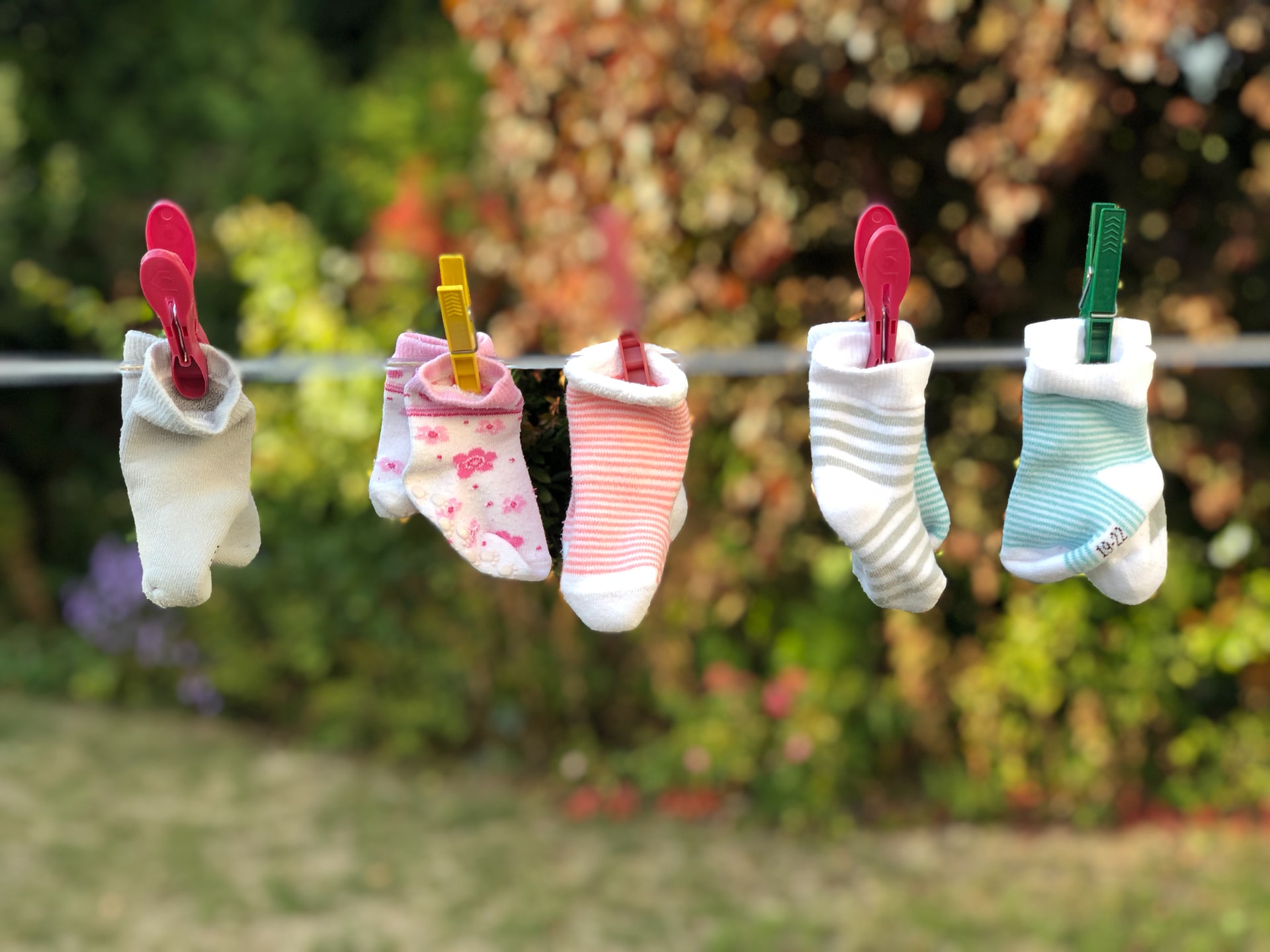
How to dry clothes fast
Drying your clothes in a clothes dryer is certainly the fastest, easiest method. Take the extra second to shake out each item before throwing it into the dryer. This can help prevent wrinkles and cut down on drying time. And, be sure not to overstuff your dryer. This will end up taking more time, not less. If you feel inclined, toss in a dryer sheet to soften clothes and cut down on static, but this step isn't a must-do, especially if you have sensitive skin or are trying to cut down on chemicals in your home.
When it comes to selecting a dryer setting, revert back to those handy symbols. In general, a cotton or high-heat setting is best for sturdy fabrics like towels, jeans, and T-shirts.
Synthetic fabrics require medium heat and do best on permanent press. Delicates like athleisure and lingerie should be dried on gentle for low heat.
How to dry clothes without a dryer
If you have the time, there are many perks to line drying. First off, it is a more eco-friendly option that can cut back on your energy usage and costs. You also don't run the risk of shrinking clothes as your do with your electric dryer. Plus, tumbling clothes around in the dryer causes wear and tear you can avoid by line drying.
The cons to line drying? You won't get that super soft, just-out-of-the-dryer feel. Plus, it's weather dependent and takes some extra thought and strategy.
Up for the task? Be sure to follow some general rules of thumb when line drying.
- Wipe your clothesline before hanging clothes to be sure your freshly laundered garments aren't met with dust and other debris.
- Check the forecast. Don't hang your clothes out to dry if rain is in the forecast or pollen reports are high.
- Heavier items, like sweaters, should not go on the clothesline. Instead, lay them flat to dry on an indoor drying rack.
- Like when drying clothes in the electric dryer, shake them out before hanging.
- Avoid direct sunlight for dark garments, which can encourage fading. (On the other hand, take advantage of bright sun to brighten whites.)
- Hang pants by the hems, not the waistband, and pin knits upside down to avoid drooping or marks on the shoulders. Pin towels by the corners.
How to wash upholstery and curtains
Upholstery covers: when washing sofa or cushion covers, turn them inside out. Anything with a zipper should be zipped closed before it goes in. Stick to a cool wash for best results, checking the care label first to ensure that they can be machine washed and up to what temperature. You might also find that an upholstery cleaner will do the job more quickly, meaning you won't need to rely on a machine wash.
Best upholstery cleaners
Find our pick of the best for keeping your sofa covers, cushions and throws looking as good as new.
Curtains: especially net or voile, should be washed cold and hung up while still damp to prevent creasing. Check care labels, though, as some are best left to dry cleaners.
How to wash bedding
Knowing how to do laundry puts washing bedding correctly near the top of any list. It is very important to wash your bedding, such as duvets and pillows, at least once every three months (more regularly if you suffer from allergies), in order to get rid of dust mites, skin cells, and sweat.
The biggest problem with laundering bedding at home is that large items such as duvets may not fit into your washing machine. Don't try to cram it in if it really is too big – you'll end up with unwashed patches, and may have trouble getting the over-full machine to spin. Instead, take your duvet to the laundrette or use a professional laundry service. Don't dry clean your bedding.
- Find the best bedding deals in our latest buyer's guide.
How to wash pet bedding
Pet bedding is best cleaned with a sticky roller first or, better still, a vacuum cleaner designed to pick up pet hair, to ensure that you don't end up with loads of pet hair clogging up your washing machine filter. Then it needs to go on a hot wash (60ºC) so that you can be sure that germs, dust mites and fleas have been killed off.
Find out more about spot cleaning after dogs and the best ways to clean up after cats for more specific pet mess cleaning tips.
The best vacuum cleaners for pets and pet hair
Find the best vacuum cleaner to keep your home pet-mess free – we've reviewed the top buys.
Which wash cycle
Now that you have your laundry sorted, you'll need to select your water temperature and wash cycle. Sturdy, everyday pieces can handle hot water if they are heavily soiled (looking at you parents). If not, opt for warm water. Any brand-new or highly saturated pieces should be washed in cold water to avoid bleeding.
No shock here: these everyday pieces call for the normal cycle.
Sheets and towels are pretty sturdy, and they come in contact with a lot of sweat and body oils. Wash them with hot water to get them extra clean, on the normal cycle.
Delicates should never be washed in hot water. Instead, opt for warm or cold. If you use the machine, wash on your delicates cycle. Most, however, should be hand-washed (more on that later). The same goes for woolens, although they should only ever be washed in cold water to avoid shrinkage.
Items that shouldn't be washed together
Most of us will know to wash cottons, synthetics, and delicates separately – the washing machine controls make that obvious. But what about different types of garments and household items? Our advice is never to mix the following:
Towels and clothes: it may be tempting to chuck it all in together, but towels are made from tougher, thicker fabric than clothing and will basically be scratching it through the washing cycle. This will mean faster wear and tear of your clothes.
Denim and other cotton: the same applies to your jeans. Denim is a specially processed, tough cotton fabric that is abrasive to softer items such as t-shirts.
Underwear and outerwear: we're all guilty of this, but delicate underwear, and especially bras, should never, ever be put on the same cycle as your clothes. Bras will lose shape if washed with other items and on a high-spin cycle – even if you put them in a laundry bag. Underwear contains delicate elastic that will disintegrate quite quickly if washed on high temperature, high spin cycles. Always wash your delicates on a 30ºC, delicate cycle.
How to never lose a sock again
Laundry mesh bags, which you can buy for washing delicate items such as bras, will stop socks going missing. Simply pop dirty socks into a bag and they'll all be present and correct at the end of the wash, too.
Find more clever laundry hacks in our guide.
How to do laundry if you are an allergy sufferer
Knowing how to do laundry if you are an allergy sufferer is vital. The number of people with skin allergies and eczema is on the rise, and some say that harsh laundry detergents are partly to blame. If you itch every time you get into bed after you've changed the sheets, or every time you put on a clean t-shirt, this may well be something to look into.
Fragrance is by far the biggest culprit, so choose a fragrance-free detergent. Avoid fabric softeners, as they're always worse for high content of potential allergens. You'll also need to make sure you wash your bedding regularly and at 60ºC, as that's the only temperature that will kill allergy-causing dust mites.
Choosing a laundry detergent
We live in the era of choice. So it's no surprise laundry detergent today is available in a few different forms. General purpose laundry detergent is available in liquid, single-dose packets, and powdered forms.
Here's a run through of the Liquid detergent is definitely the most popular and common, and it definitely gets the job done. Just be careful not to overdo it, which can leave a residue on clothes and waste precious cash.
Powdered detergents are the cheapest, but they aren't the best if you prefer washing in cold water as they may not completely dissolve. To avoid this, you can always mix the detergent with a quart of hot water before adding your laundry.
Single-dose packs are pretty dang convenient, and they cut down on waste since you don't need a plastic detergent jug, but it's no surprise they are the most expensive per load. And, they are portioned for average size loads. If you are washing an extra large load or anything that is extra soiled, use two.
Washing powder or liquid laundry detergent?
There is no real consensus on what type of laundry detergent is best: clothing manufacturers will tell you that liquid detergents keep your clothes in optimal condition longer, while washing machine manufacturers will point out that a powder detergent is far better for the washing machine itself, less likely to create buildup (especially in hard-water areas).
In reality, however, any laundry detergent, whether it's powder- or liquid-based, is a combination of surfactants (the chemicals that actually do most of the cleaning), bulking agents, bleaching and foaming agents, and chelating agents or builders, which bind with the metals in your water and counteract the effect of hard water.
Some detergents also contain enzymes that tackle stains of organic origin – these are the products labelled 'bio', and they can be great for family households with young children, but they won't be suitable for everyone, as they're known for triggering skin allergies in some people.
From our experience, a good detergent is a higher-quality detergent, regardless of whether it's powder- or liquid-based. Many cheaper powder detergents contain lots of fillers, which do none of the cleaning and are responsible for build-up and streaks on your clothing.
So, if you are on a budget but still want quality, we would advise going for a plant-based liquid detergent. More expensive powder detergents (organic brands in particular) exclude fillers and use only high-quality soap as their base. These are great, but don't come cheap. Avoid liquid detergent capsules and anything that goes directly into the drum (streaking and buildup highly likely).
How much laundry detergent should I use?
Experts at Tide say, 'Doing the laundry is a little more sophisticated than eyeballing how much detergent you need and turning the machine on. Using too little or too much detergent often leads to poor laundry results.'
'For example, take a high efficiency (HE) washing machines. Since they use less water, putting in too much laundry can soak up all the water so there isn’t enough to completely dissolve the detergent.'
It goes without saying, but always check the dosage directions on your detergent, as this varies depending on brand and a number of other factors.
Tide's experts recommend adjusting the dosage dependent on the following:
- How dirty your clothes are: 'The more heavily soiled your clothes are, the more detergent you will need to use in a load. This helps to remove dirt and prevent it from going back onto your clothes.'
- Size of the load: 'Detergent dosage directions are based on the drum size of a conventional washing machine, but machines are always getting bigger so if you have a new washing machines, it may have a bigger drum. Larger wash loads bring in more dirt, so to get great results on every wash you need more detergent.'
- Water hardness: 'Water hardness varies throughout the country. To get the best results, people in hard water areas need to use more detergent.'
Choosing the best washing machine should ensure a quality wash
Of course, knowing how to do laundry to perfection starts with choosing a good washing machine. An old, inefficient machine will almost certainly give you poor results, even if you do everything right. If it's time for you choose a new one, consult our buyer's guides below, or find a washing machine deal in our latest buyer's guide.
Finally, don't forget about washing machine maintenance. Run your washing machine on its hottest cycle once a month, with no clothes in it, and use our washing machine cleaning tips (above) to keep yours in top condition.
The best freestanding washing machines
Use our guide to find the best freestanding washing machine at the very best price.
The best integrated washing machine
Get a streamlined look in your kitchen with an integrated washing machine – see our top pick.
The best quiet washing machines
Putting a washing machine in an open plan kitchen diner? You'll want one that's quiet to run.
What is the best temperature to do laundry at?
There is no hard and fast rule here. Of course, the easiest way to determine the temperature to do laundry at is to look at the clothing's care label, but a clothing label is only a guideline, so the temperature you choose for doing laundry should also depend on the exact fabric and garment type you're washing – and, to some degree, personal preference.
If your main concern is the environmental impact of doing laundry, then 30ºC might be your default temperature. In fact, many newer, high tech washing machine models promise to get your clothes perfectly clean at lower temperatures; some very new models claim to get your clothes clean at as low as 20ºC.
Having said that, if your washing machine is of standard quality, washing everything on 30ºC cycles may have unpleasant consequences, including bacteria growth on both your clothes and inside your washing machine.
For individual items, follow care guidelines but bear in mind that:
- Towels and bedlinen need to be washed at 60ºC to ensure the proper elimination of bacteria.
- Whites also need to be washed on a 60ºC cycle at least occasionally, to prevent them from going grey.
- Sweaty gym kit? Again, 60ºC is a must, or you could be looking at dermatitis or acne.
- Delicate fabrics, on the other hand, should never be washed on anything higher than a 40ºC cycle. This includes not just silk and wool (more on those below), but also linen and organic cotton (apart from towels). If you constantly wash high-quality, organic cotton in high temperatures, you will begin to see pilling and a loss of shape.
- Colours will also fade if washed in hot water, so choose a 30ºC to 40ºC cycle.
- Dark colours should stay on a 40ºC cycle maximum.
Tumble dryers: should you use them?
We say: if you can avoid them, and have the space for line drying and/or a dehumidifier, then don't use them. However, there's no doubt that tumble dryers can be handy for drying large, bulky items such as towels and bedlinen, and in houses or flats where the choice is between damp-smelling towels and a tumble dryer, the tumble dryer obviously is the better option. Just be prepared to replace any items you tumble dry sooner, as tumble drying does thin fabric after a while.
If you do decide to get a tumble dryer, consult our buyer's guide to the 5 best tumble dryers for the modern home first. We've also reviewed the best washer dryers if you need to save space.
Find out more, too, about why you might want to invest in a dehumidifier rather than a tumble dryer.
What to do when colors run
Martha Stewart has a top tip for when colors run in the wash:
'Forget soaking your bright fabrics in salt or vinegar to forestall bleeding; it won't help. If brights do bleed onto other clothing in the wash, don't put the stained items in the dryer. The heat will set the dye, making any discoloration permanent. Instead, launder the clothes again separately. As long as you don't apply heat, the dye should come out, even if you don't rewash the items immediately.'
Anna is a professional writer with many years of experience. She has a passion for contemporary home decor and gardening. She covers a range of topics, from practical advice to interior and garden design.




